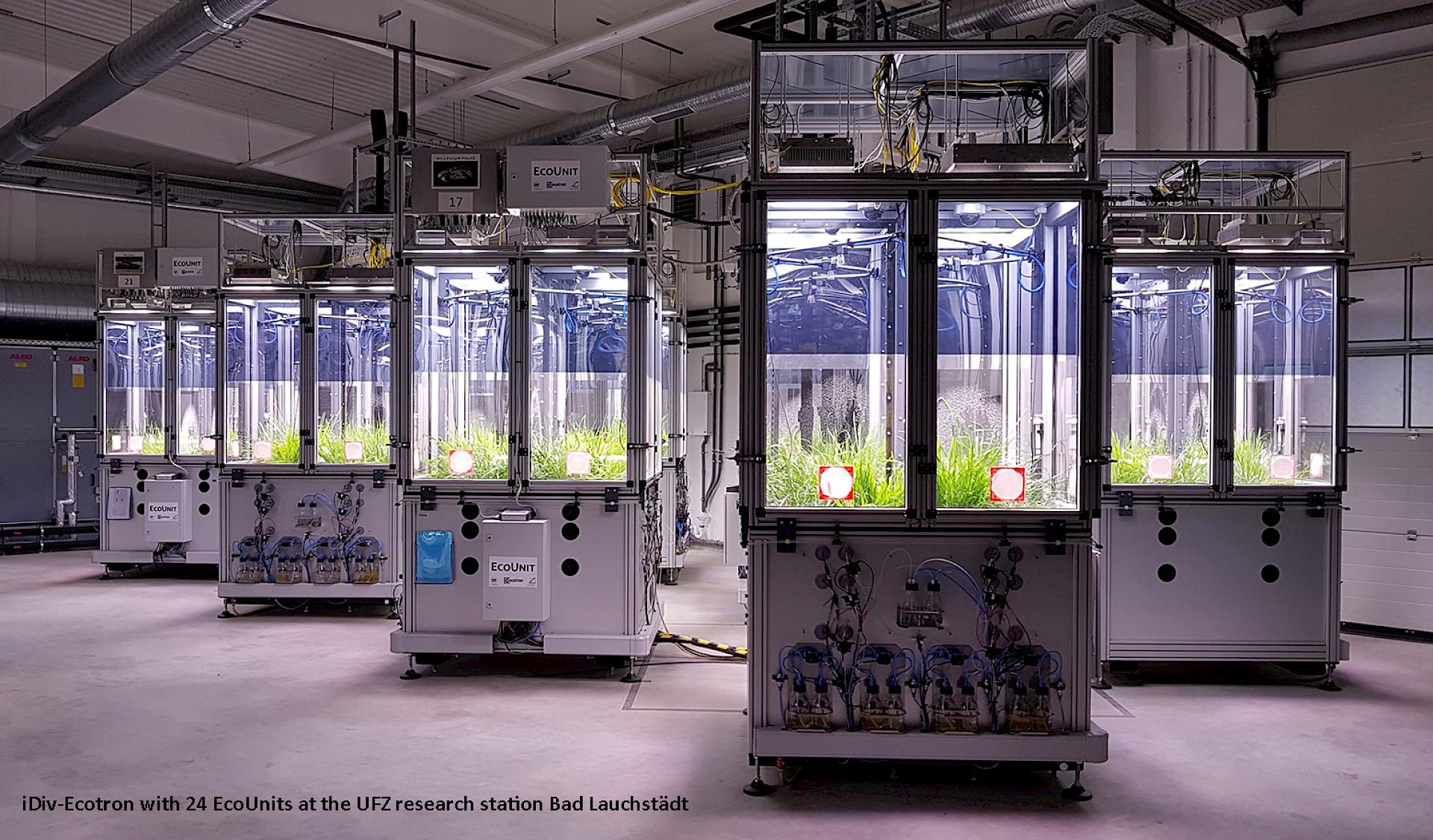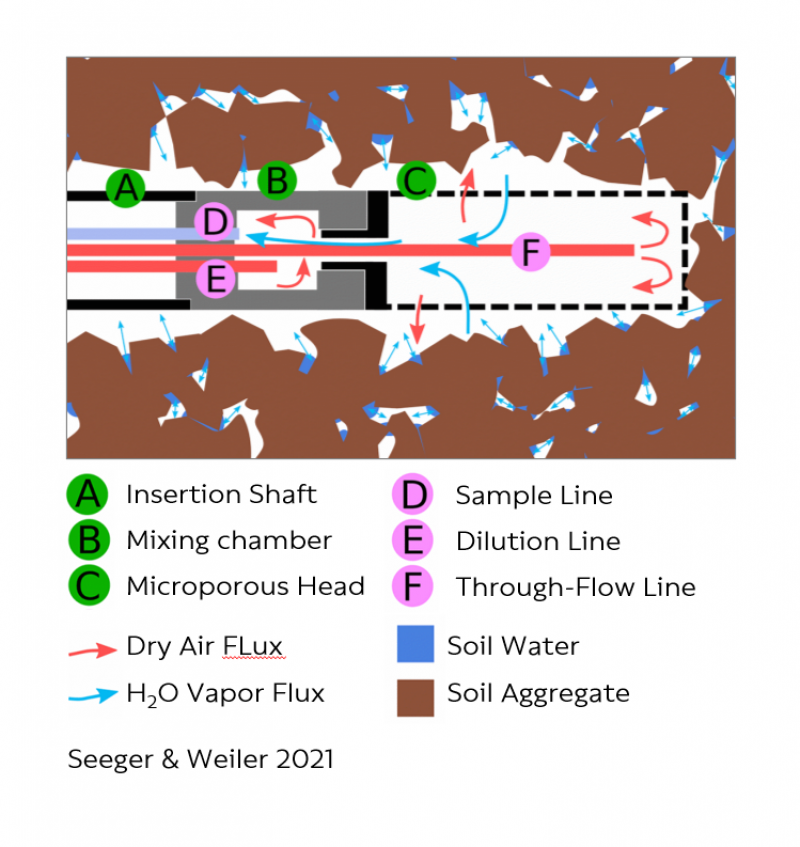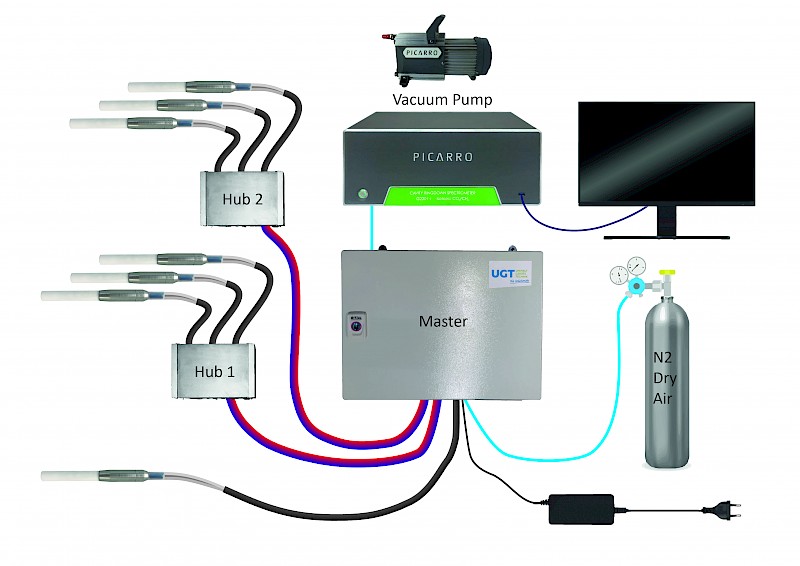Product overview
Water Isotope Probe (WIP)-System
The WIP system is used for continuous detection of water vapor and the stable water isotopes d18O and d2H in soil, xylem of trees and/or the atmosphere. Signatures can thus be tracked and studied through the entire soil-plant-water cycle.
This makes the WIP system ideal for soil and ecohydrological studies of rainwater uptake by plants, both in the field and in lysimeters and EcoLabs, including labeling experiments.
The system includes the WIP probes, which we manufacture under exclusive license, a distribution system, and control software that is installed on the measuring computer of a laser spectrometer for gas and isotope measurement (e.g. Picarro L2130-i).
Reference University of Oulo Flyer WIP-System
Our products in Water Isotope Probe (WIP)-System
Things to know
Background
The analysis of the stable isotopes d²H and d18O of the water molecule has established itself as an important tracer technology in a variety of scientific disciplines. In ecohydrology, it is used to better understand water and solute cycling at scales ranging from plants to landscapes.
Conventional isotope measurements involve destructive collection of soil cores, wood cores, or branch samples followed by extraction and laboratory analysis. The time, effort, and cost required for each measurement is very high, and the measurement cannot be repeated in the same location (in situ). As a result, only data with low temporal resolution are generated, with high signal noise due to spatial heterogeneity (Volkmann and Weiler 2014).
In situ methods have great advantages over conventional isotope measurements because they are minimally invasive and can measure at high frequency at the same location. The measurement principle is based on the equilibrium between gas and liquid phase "Direct Vapor Equilibrium Method" (Volkmann and Weiler 2014, Seeger and Weiler 2021): The measurement of water vapor content and isotope signature in the gas phase allows statements about the liquid phase without the extraction of water. The innovative water isotope probes (WIPs) work according to this basic principle. The probes were developed at the University of Freiburg and are based on the scientific findings of Volkmann and Weiler (2014) (patent number DE102013013969B3).
UGT with exclusive license
Since 2022, we have been continuously optimizing them, manufacturing and distributing them under exclusive license. To date, the WIPs are the only in situ probes proven to work in soil and tree xylem (Volkmann et al. 2016 in Seeger and Weiler 2021).
How it works
The WIPs work according to the DVE-DDS method ("Diffusion Dilution Sampling", Volkmann and Weiler 2014). During gas sampling, no absolute pressure gradient is built up, but the equilibrium is set via diffusion, using the different water vapor partial pressure in the gas mixture in the filter cartridge and the surrounding medium (soil/snow/xylem/air). For this purpose, the WIPs consist of three parts: the filter cartridge, the shaft with mixing chamber and the tube with the three gas transport capillaries for dilution, sample and flow.
Water vapor diffuses from the surrounding medium into the mixing chamber via the filter cartridge. The sampling capillary carries the gas flow from the probe to the isotope laser spectrometer. A second capillary supplies controlled nitrogen to dilute the sample gas into the mixing chamber. In this way, a relatively stable water vapor concentration of the sample gas can be ensured. The third capillary extends into the filter cartridge. It supplies just enough nitrogen during measurement to ensure pressure equalization and provides purging between measurement cycles.
The advantages of the dilution principle of the WIPs compared to comparable probes are the relatively stable water vapor concentration and the very small line diameters. Condensation and thus fractionation is largely prevented, which also protects the measuring chamber of the isotope analyzer. Installation is easy and the same probes can be used for all media (soil/ tree/ air).
Optimum measuring success with the WIP system
You can purchase the WIP probes individually. However, we have so far only tested the optimum function in conjunction with our WIP system, consisting of:
- the WIP probes
- the hoses
- the central control unit (master) for the control of the WIPs and the dilution rates
- additional distribution boxes (hubs) if required
- the software, which is ideally installed on a Picarro water isotope analyzer.
The modular WIP system was developed by the TU Freiburg (Volkmann and Weiler 2014) and tested in long-term experiments (Seeger and Weiler 2021). It could be shown that the WIP system operates low-maintenance and autonomously in the field via automated measurement cycles (incl. flushing, standards) over weeks and months (Gessler et al. 2014, Mennekes et al. 2021, Volkmann et al. 2016 a and 2016 b). The WIP system acts as a sampling, multiplexing and standards delivery module - without the need for further peripherals.
References
- Gessler, A., Bächli, L., Rouholahnejad Freund, E., Treydte, K., Schau,b M., Haeni, M., Weiler, M., Seeger, S., Marshall, J., Hug, C., Zweifel, R., Hagedorn, F., Rigling, A., Saurer, M., Meusburger, K. Drought reduces water uptake in beech from the drying topsoil, but no compensatory uptake occurs from deeper soil layers. New Phytol. 2022 Jan;233(1):194-206. doi: 10.1111/nph.17767. Epub 2021 Oct 15. PMID: 34610146Volkmann, T. H. M. and Weiler, M.: Continual in situ monitoring of pore water stable isotopes in the subsurface, Hydrol. Earth Syst. Sci., 18, 1819–1833, https://doi.org/10.5194/hess-18-1819-2014, 2014.
- Mennekes, D., Rinderer, M., Seeger, S., and Orlowski, N.: Ecohydrological travel times derived from in situ stable water isotope measurements in trees during a semi-controlled pot experiment Hydrol. Earth Syst. Sci., 25, 4513–4530, https://doi.org/10.5194/hess-25-4513-2021, 2021.
- Volkmann, T. H. M., and Weiler, M.: Continual in situ monitoring of pore water stable isotopes in the subsurface, Hydrol. Earth Syst. Sci., 18, 1819–1833, ttps://doi.org/10.5194/hess-18-1819-2014, 2014.
- Volkmann, T. H. M., Haberer, K., Gessler, A., and Weiler, M.: High-resolution isotope measurements resolve rapid ecohydrological dynamics at the soil-plant interface, New Phytol., 210, 839–849, https://doi.org/10.1111/nph.13868, 2016 a.
- Volkmann, T. H. M., Kühnhammer, K., Herbstritt, B., Gessler, A., and Weiler, M.: A method for in situ monitoring of the isotope composition of tree xylem water using laser spectroscopy, Plant Cell Environ., 39, 2055–2063, https://doi.org/10.1111/pce.12725, 2016 b.
- Seger, S. and Weiler, M.: Temporal dynamics of tree xylem water isotopes: In-situ monitoring and modelling, Biogeosciences, 18, 4603–4627, https://doi.org/10.5194/bg-18-4603-2021, 2021.
Contact us
Are you looking for a strong partner and a sustainable cooperation? Then simply get in touch with us! We love exciting and challenging projects around environmental technology.



